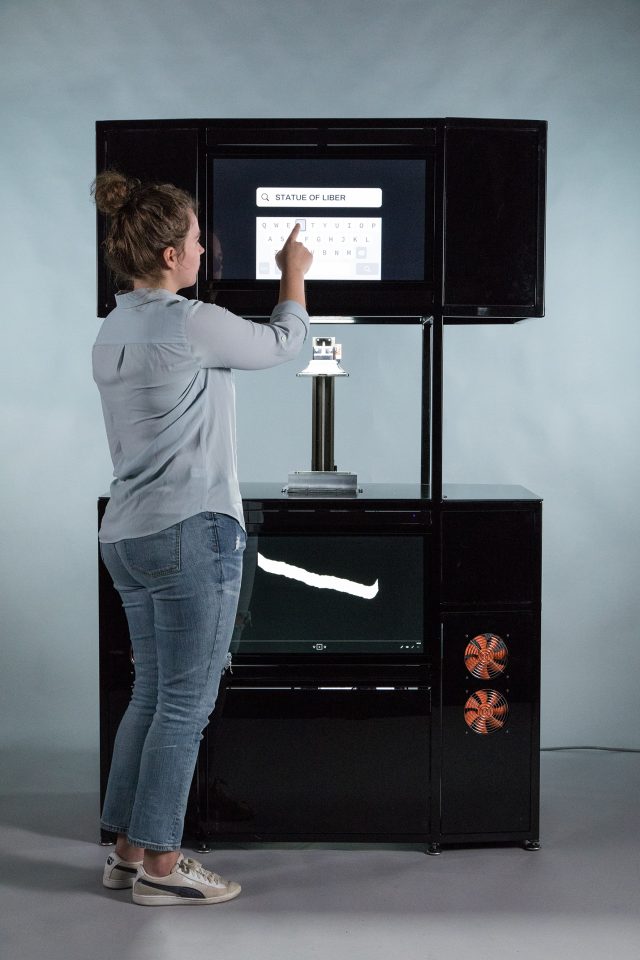Ever wished you could just tell your 3D printer what to print and it would just do it for you? Researchers from Virginia Tech multidisciplinary have a solution for you.
They’ve developed Source Form, a stand-alone device that crowdsources images of a user-defined object to create a model, which it then 3D prints. This technology could result in an easier 3D printing process, making STL files redundant.
Source Form was recently on display in Los Angeles, California at the SIGGRAPH 2019 conference. Through the use of photogrammetry, the device can stitch together photos tagged with a user’s search item to come up with a model.
Two outcomes are possible with this automated, crowdsourced object generator. Either it will produce “iterative versions of a specific object” such as the Eiffel Tower, or it will produce “democratized versions of common objects”, such as a banana.
As humans continue to upload photos to social media, Source Form’s database grows in both quantity and quality. With every new print, the Source Form gathers a new dataset which means the resulting 3D print will always evolve and become more and more detailed over time.
https://www.youtube.com/watch?v=-p5s-eZF2u0
Goodbye Subjective User Input
The device appears simple to use: Simply type in the object you want 3D printed, and the device collects every image available of this object on the internet.
It then builds a model using feature correspondence matching.
“This step involves extracting local image patches from images and matching them across the image collection,” explains The Source Form on its project page. “The main challenge in this step lies in matching image patches that were captured under significantly different settings, (for example), different viewpoints, lighting conditions, and exposure. We utilize robust feature extraction and matching algorithms for addressing this issue.”
Next up, the device builds a 3D mesh reconstruction which is slowly refined and processed till it’s ready to 3D print. The team chose mask projection vat-photopolymerization (MPVP) to create the finished models.
MPVP can achieve high-quality resolution, offers a good surface finish, but isn’t as expensive as powder bed fusion and material jetting, explains Source Form. It can also manufacture parts at speeds of 13-25 mm/min.
To learn more about Source Form, visit Virginia Tech’s project page.

License: The text of "This 3D Printer Prints Whatever You Want – Without STLs" by All3DP is licensed under a Creative Commons Attribution 4.0 International License.